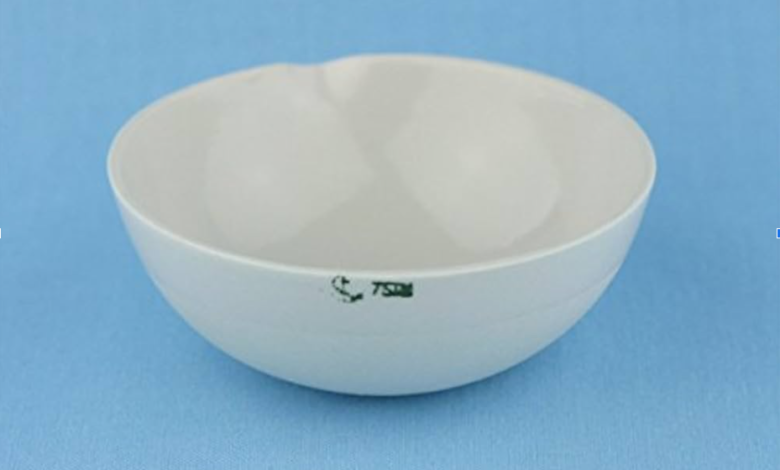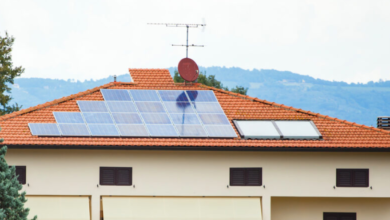Why is the surface area of an evaporating dish important?

Introduction to Evaporating Dishes
The evaporating dish stands as one of the fundamental pieces of equipment in any chemistry laboratory, serving a critical role in countless analytical procedures and research applications. These shallow, wide vessels are specifically designed to facilitate the controlled removal of solvents from solutions, leaving behind concentrated residues or solid materials for further analysis. While they may appear simple in construction, the design principles behind evaporating dishes involve careful consideration of multiple factors, with surface area being perhaps the most crucial element affecting their performance.
Understanding why surface area matters in evaporating dishes requires us to delve into the fundamental principles of heat transfer, molecular behavior, and practical laboratory efficiency. The relationship between surface area and evaporation effectiveness has been recognized by chemists and laboratory technicians for centuries, yet the precise mechanisms and optimization strategies continue to evolve with advances in materials science and laboratory technology.
When we examine the role of surface area in evaporating dishes, we must consider not only the immediate effects on evaporation rate but also the broader implications for experimental accuracy, time efficiency, energy consumption, and overall laboratory productivity. The surface area of an evaporating dish directly influences how quickly and uniformly a solution can be concentrated or dried, which in turn affects the quality of results obtained from analytical procedures.
Understanding Surface Area in Laboratory Equipment
Surface area, defined as the total area of all surfaces of a three-dimensional object that are exposed to the surrounding environment, plays a fundamental role in determining the effectiveness of laboratory equipment. In the context of evaporating dishes, we are primarily concerned with the exposed liquid surface area, which represents the interface between the solution being processed and the surrounding atmosphere.
The mathematical relationship between surface area and volume becomes particularly important when selecting appropriate evaporating dishes for specific applications. A wider dish with a larger surface area will have a different surface-to-volume ratio compared to a narrower, deeper vessel containing the same amount of liquid. This ratio directly impacts the rate at which evaporation occurs and influences the uniformity of the evaporation process.
Laboratory professionals must understand that surface area considerations extend beyond simple geometric calculations. The effective surface area available for evaporation can be influenced by factors such as the wetting properties of the dish material, the viscosity and surface tension of the liquid being processed, and the presence of any dissolved or suspended materials that might affect surface behavior.
The design of evaporating dishes has evolved to maximize the beneficial effects of increased surface area while maintaining practical considerations such as structural integrity, ease of handling, and compatibility with laboratory heating equipment. Modern evaporating dishes typically feature wide, shallow profiles that optimize the surface area to volume ratio while providing adequate mechanical stability for routine laboratory use.
The Science Behind Evaporation and Surface Area
Evaporation occurs when molecules at the surface of a liquid gain sufficient kinetic energy to overcome the intermolecular forces holding them in the liquid phase and escape into the gas phase. This process is fundamentally dependent on the available surface area because only molecules at the liquid-air interface can directly participate in the evaporation process. Understanding this molecular-level phenomenon is essential for comprehending why surface area is so critical in evaporating dish design and application.
The kinetic theory of gases and liquids provides the theoretical framework for understanding how surface area affects evaporation rates. Molecules in a liquid are in constant motion, with their kinetic energies distributed according to the Maxwell-Boltzmann distribution. At any given temperature, a certain fraction of molecules will have sufficient energy to escape from the liquid surface. The larger the surface area, the greater the number of molecules that have the opportunity to escape per unit time.
Heat transfer mechanisms also play crucial roles in the evaporation process. Conductive heat transfer from the heating source through the dish material to the liquid, convective heat transfer within the liquid itself, and convective and radiative heat transfer at the liquid surface all contribute to the overall evaporation rate. A larger surface area enhances both convective heat transfer at the liquid-air interface and the radiative heat loss from the liquid surface.
The concept of mass transfer becomes particularly relevant when considering the role of surface area in evaporation. The rate of mass transfer from the liquid phase to the gas phase is directly proportional to the available surface area, assuming uniform conditions across the interface. This relationship forms the basis for many engineering calculations used in the design of industrial evaporation equipment and can be applied to optimize laboratory-scale evaporation processes.
How Surface Area Affects Evaporation Rate
The relationship between surface area and evaporation rate is one of direct proportionality under ideal conditions. When all other factors remain constant, doubling the surface area of an evaporating dish will approximately double the rate at which solvent is removed from a solution. This fundamental relationship has profound implications for laboratory efficiency and experimental design.
However, the practical reality of evaporation in laboratory settings introduces several complications to this simple relationship. As evaporation proceeds and the liquid level decreases, the effective surface area may change, particularly in dishes with sloped sides. Additionally, as the concentration of dissolved materials increases during evaporation, the physical properties of the remaining solution may change, affecting the evaporation rate in ways that are independent of surface area considerations.
The boundary layer effect represents another important consideration in understanding how surface area affects evaporation rate. As evaporation occurs, the air immediately above the liquid surface becomes saturated with vapor, creating a concentration gradient that opposes further evaporation. In dishes with larger surface areas, air circulation patterns may develop that help to disrupt this boundary layer and maintain higher evaporation rates.
Temperature uniformity across the liquid surface becomes increasingly important as surface area increases. In larger evaporating dishes, temperature gradients may develop across the surface, leading to non-uniform evaporation rates. This can result in uneven concentration of dissolved materials and may affect the quality of the final product. Understanding these thermal effects is crucial for optimizing evaporation processes in dishes with large surface areas.
See also: Automation in Everyday Life: How Smart Technology Is Streamlining Daily Tasks
Temperature and Heat Distribution Considerations
The thermal behavior of evaporating dishes is intimately connected to their surface area characteristics. Larger surface areas generally provide more efficient heat distribution and temperature uniformity, but they also present challenges in terms of heat loss and energy efficiency. The thermal conductivity of the dish material, combined with its surface area, determines how effectively heat is transferred from the heating source to the liquid being processed.
When heat is applied to an evaporating dish, it must be conducted through the dish material to reach the liquid. The thermal gradient established across the dish thickness depends on factors including the material’s thermal conductivity, the thickness of the dish bottom, and the rate of heat removal through evaporation at the surface. Dishes with larger surface areas typically have thinner profiles to maintain reasonable heat transfer rates while maximizing the evaporation interface.
The heat capacity of the dish material also influences thermal behavior. Materials with high heat capacity require more energy to reach operating temperature but provide more stable thermal conditions once equilibrium is established. The relationship between surface area and thermal mass becomes important when considering heating and cooling cycles, particularly in applications requiring precise temperature control.
Radiative heat loss from the liquid surface increases with surface area, which can significantly impact the energy efficiency of evaporation processes. While this heat loss contributes to the overall evaporation rate, it also represents energy that must be continuously supplied to maintain desired operating temperatures. Laboratory professionals must balance the benefits of increased surface area against the associated energy costs and heating requirements.
Practical Applications in Laboratory Work
In routine analytical chemistry, the surface area of evaporating dishes directly impacts the speed and efficiency of sample preparation procedures. Gravimetric analysis, where precise determination of sample mass is critical, benefits from the controlled evaporation rates that can be achieved through proper surface area selection. The ability to rapidly concentrate solutions while maintaining temperature control is essential for many analytical methods.
Sample preparation for instrumental analysis often requires the concentration of dilute solutions to levels suitable for detection and quantification. The surface area of the evaporating dish determines how quickly this concentration can be achieved, directly affecting laboratory throughput and productivity. In high-volume analytical laboratories, the time savings achieved through optimal surface area selection can translate into significant operational advantages.
Research applications frequently require the preparation of solid samples from solution-based starting materials. The crystallization behavior of dissolved compounds can be influenced by the evaporation rate, which is controlled in part by the surface area of the evaporating dish. Slower evaporation rates, achieved through smaller surface areas, may promote the formation of larger, more well-formed crystals, while faster evaporation may result in smaller crystals or amorphous solids.
Quality control procedures in industrial settings often rely on evaporation techniques for sample concentration and purification. The consistency and reproducibility of results depend on maintaining controlled evaporation conditions, including appropriate surface area selection. Standard operating procedures typically specify dish sizes and surface area requirements to ensure consistent results across different operators and time periods.
Material Science and Surface Area Optimization
The materials used in evaporating dish construction must be selected to optimize the benefits of increased surface area while maintaining chemical compatibility and mechanical integrity. Porcelain, glass, and various metal alloys each offer different advantages and limitations when it comes to surface area effectiveness. The surface finish and microscopic texture of the dish material can significantly influence the actual effective surface area available for evaporation.
Surface roughness at the microscopic level can increase the effective surface area beyond the geometric surface area calculated from dish dimensions. This increased surface area can enhance evaporation rates, but it may also provide nucleation sites for crystal formation or create areas where residual materials may be retained after cleaning. The balance between enhanced performance and practical considerations must be carefully evaluated.
Chemical compatibility between the dish material and the solutions being processed becomes increasingly important as surface area increases. Larger surface areas provide more opportunity for chemical interactions between the solution and the dish material, potentially leading to contamination or material degradation. Materials selection must consider both the immediate compatibility and long-term stability under repeated use conditions.
The thermal expansion properties of dish materials interact with surface area considerations in important ways. As dishes are heated and cooled during use, thermal stresses develop that are proportional to the dimensions and, by extension, the surface area of the dish. Materials with low thermal expansion coefficients and high thermal shock resistance are preferred for applications requiring large surface areas and rapid heating or cooling cycles.
Comparative Analysis of Different Dish Sizes
Laboratory supply catalogs typically offer evaporating dishes in a range of sizes, each optimized for different applications and volume requirements. Understanding the performance characteristics of different dish sizes enables laboratory professionals to select the most appropriate equipment for their specific needs. The relationship between dish diameter, depth, and effective surface area varies depending on the dish profile and design.
Small evaporating dishes, typically with diameters ranging from 50 to 100 millimeters, provide controlled evaporation rates suitable for small sample volumes and applications requiring precise control over evaporation conditions. These dishes offer excellent temperature uniformity and minimal thermal mass, making them ideal for applications where rapid heating and cooling are required.
Medium-sized dishes, with diameters typically ranging from 100 to 200 millimeters, represent a compromise between evaporation rate and sample capacity. These dishes are commonly used in routine analytical work where moderate sample volumes must be processed efficiently without sacrificing control over evaporation conditions. The surface area to volume ratio of medium dishes makes them versatile tools for a wide range of applications.
Large evaporating dishes, with diameters exceeding 200 millimeters, provide maximum surface area for rapid evaporation of large sample volumes. However, these dishes present challenges in terms of temperature uniformity, thermal mass, and handling convenience. Their use is typically justified in applications where processing speed is more important than precise control over evaporation conditions.
The depth-to-diameter ratio of evaporating dishes significantly influences their surface area characteristics and practical performance. Shallow dishes maximize surface area relative to volume but may be prone to spattering and require careful heating to prevent hot spots. Deeper dishes provide more conservative evaporation conditions but sacrifice some efficiency in terms of surface area utilization.
Safety Considerations Related to Surface Area
The safety implications of surface area in evaporating dishes extend beyond simple considerations of heating and chemical compatibility. Larger surface areas increase the potential for solvent vapor release, which may present inhalation hazards or fire risks depending on the materials being processed. Proper ventilation and fume hood usage become increasingly important as surface area increases.
Thermal safety considerations are directly related to surface area characteristics. Larger dishes with greater surface areas present more opportunities for accidental contact with hot surfaces, and they typically retain heat longer after heating is discontinued. Laboratory personnel must be trained to recognize and respond appropriately to the thermal hazards associated with different dish sizes and surface areas.
The potential for chemical splash and spattering increases with surface area, particularly when rapid heating is applied to dishes containing volatile solvents or reactive materials. Safety protocols must account for the increased risk associated with larger surface areas and may require additional protective equipment or modified heating procedures.
Emergency response procedures must be adapted to address the specific risks associated with different dish sizes and surface areas. Larger dishes containing flammable solvents present greater fire risks, while smaller dishes may be more prone to overheating and thermal decomposition. Emergency equipment and procedures should be selected and designed to address the full range of potential hazards.
Economic and Efficiency Factors
The economic implications of surface area selection in evaporating dishes extend beyond the initial equipment cost to include energy consumption, time efficiency, and overall laboratory productivity. While larger dishes with greater surface areas typically cost more initially, they may provide economic advantages through reduced processing times and improved throughput.
Energy efficiency calculations must consider both the direct energy required for heating and the indirect energy losses associated with increased surface area. Larger surface areas result in greater heat losses through radiation and convection, which must be compensated by increased energy input. However, the faster processing times achievable with larger surface areas may offset these energy costs in many applications.
Labor costs represent a significant component of laboratory operating expenses, and the time savings achieved through optimal surface area selection can translate into substantial economic benefits. The ability to process samples more quickly through appropriate dish selection allows laboratory personnel to complete more work in less time, improving overall productivity and reducing per-sample costs.
Equipment replacement and maintenance costs may be influenced by surface area considerations. Larger dishes may be more prone to thermal stress and mechanical damage, potentially requiring more frequent replacement. However, the improved efficiency and throughput may justify these increased maintenance costs in high-volume applications.
Modern Innovations in Evaporating Dish Design
Recent advances in materials science and manufacturing technology have enabled the development of evaporating dishes with optimized surface area characteristics and improved performance features. Modern dishes may incorporate surface treatments, specialized coatings, or novel materials designed to enhance evaporation efficiency while maintaining chemical compatibility and mechanical integrity.
Microstructured surfaces represent an emerging area of innovation in evaporating dish design. By creating controlled microscopic textures on the dish surface, manufacturers can increase the effective surface area available for evaporation without increasing the overall dish dimensions. These textured surfaces may also promote more uniform heat distribution and reduce the tendency for localized overheating.
Advanced ceramic and glass formulations have been developed specifically for laboratory evaporation applications. These materials offer improved thermal properties, enhanced chemical resistance, and optimized surface characteristics that maximize the benefits of increased surface area. Some modern materials also incorporate thermal shock resistance improvements that allow for more aggressive heating and cooling cycles.
Smart evaporating dishes incorporating temperature sensors, heating elements, or other monitoring capabilities represent the cutting edge of evaporation technology. These devices can automatically optimize heating rates and temperature profiles based on the surface area characteristics and the specific requirements of the evaporation process, potentially improving both efficiency and reproducibility.
Certified Material Testing Products (Certified MTP) is a leading supplier of construction materials testing equipment and laboratory supplies in the United States. They offer a comprehensive range of products for testing concrete, asphalt, aggregate, soil, and cement, catering to both field and laboratory applications But no matter whether they are prefered or not, the whole idea behind these tools is similar: getting a polished, shiny, and permanent effect. New to stucco or a seasoned pro, investing in good tools and learning the nuances of their use is what will get you started perfecting your craft.
Frequently Asked Questions
What is the optimal surface area for an evaporating dish?
The optimal surface area depends on your specific application requirements, sample volume, and processing time constraints. For routine analytical work with small samples (10-50 mL), dishes with 75-125 mm diameters typically provide good balance between efficiency and control. Larger samples may benefit from dishes with 150-200 mm diameters, while very small samples requiring precise control may be better served by smaller dishes with 50-75 mm diameters.
How does surface area affect the uniformity of evaporation?
Larger surface areas can lead to temperature gradients across the dish, potentially causing non-uniform evaporation. This effect becomes more pronounced with very wide dishes or when using high heating rates. To maintain uniformity, consider using moderate heating rates, ensuring good air circulation, and selecting dish sizes appropriate for your sample volume and heating equipment.
Can I use a dish with too large a surface area for my sample?
While you can use an oversized dish, it may lead to very rapid evaporation, potential spattering, difficulty in temperature control, and increased risk of contamination. Very thin liquid layers in oversized dishes may also lead to localized overheating and sample degradation. It’s generally better to match the dish size to your sample volume and processing requirements.
How does the material of the evaporating dish affect surface area performance?
Different materials have varying thermal conductivities, surface finishes, and wetting properties that can influence the effective surface area. Glass and porcelain dishes typically provide smooth, uniform surfaces, while some metals may offer better heat distribution. The choice should consider chemical compatibility, thermal properties, and the specific requirements of your application.
What safety precautions should I take when using large surface area evaporating dishes?
Use appropriate ventilation to manage increased vapor release, employ proper personal protective equipment, be aware of increased thermal mass and longer cooling times, ensure adequate spacing from other equipment and personnel, and consider the increased fire risk when working with flammable solvents. Always follow your laboratory’s safety protocols and consider additional precautions for larger dishes.
How do I calculate the evaporation rate based on surface area?
While exact calculations require consideration of multiple factors including temperature, humidity, air flow, and liquid properties, a simplified approach assumes evaporation rate is proportional to surface area under constant conditions. For practical purposes, doubling the surface area will approximately double the evaporation rate, though this relationship may not hold exactly due to factors like boundary layer effects and changing solution properties during evaporation.
Should I consider surface area when scaling up laboratory procedures?
Absolutely. When scaling up procedures, maintaining similar surface area to volume ratios helps preserve evaporation rates and processing times. If you’re processing larger volumes, you may need proportionally larger dishes or multiple smaller dishes to maintain efficient processing. Consider how changes in surface area might affect temperature uniformity, safety requirements, and overall procedure timing.For more Any Business Card, check out this guide from NFC Business Card Temperature corrections for measuring equipment become particularly important during extreme weather conditions.
How does humidity affect the relationship between surface area and evaporation rate?
Higher humidity reduces the driving force for evaporation by decreasing the concentration gradient between the liquid surface and the surrounding air. This effect is independent of surface area, but larger surface areas may be more susceptible to variations in local humidity conditions. In high-humidity environments, you may need to increase heating rates or improve air circulation to maintain effective evaporation rates.
The importance of surface area in evaporating dishes cannot be overstated when it comes to achieving efficient, safe, and reproducible laboratory results. Understanding the complex relationships between surface area, evaporation rate, thermal behavior, and practical considerations enables laboratory professionals to make informed decisions about equipment selection and process optimization. As analytical requirements continue to evolve and new materials and technologies become available, the fundamental principles governing surface area effects will remain central to effective evaporation dish design and application.





